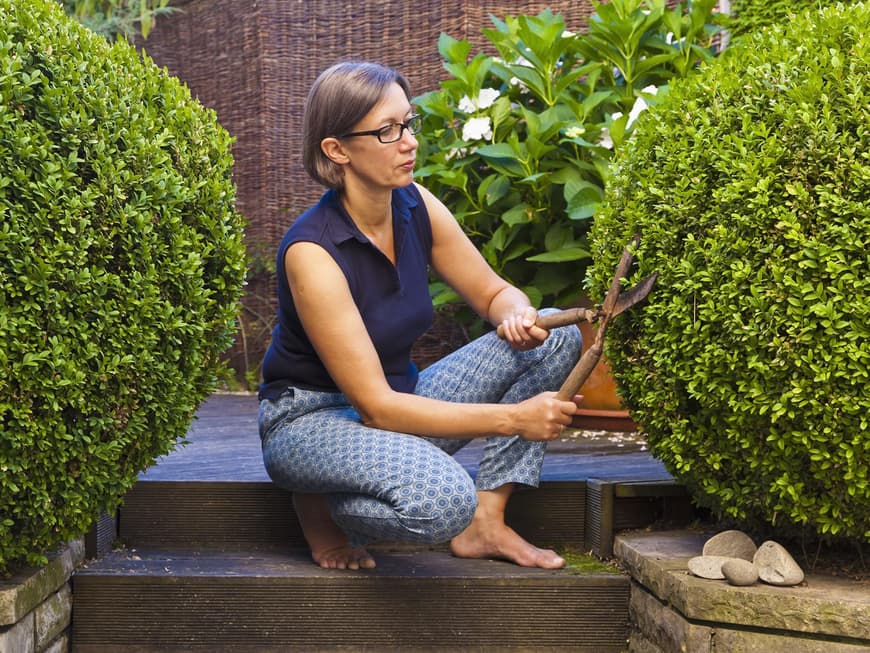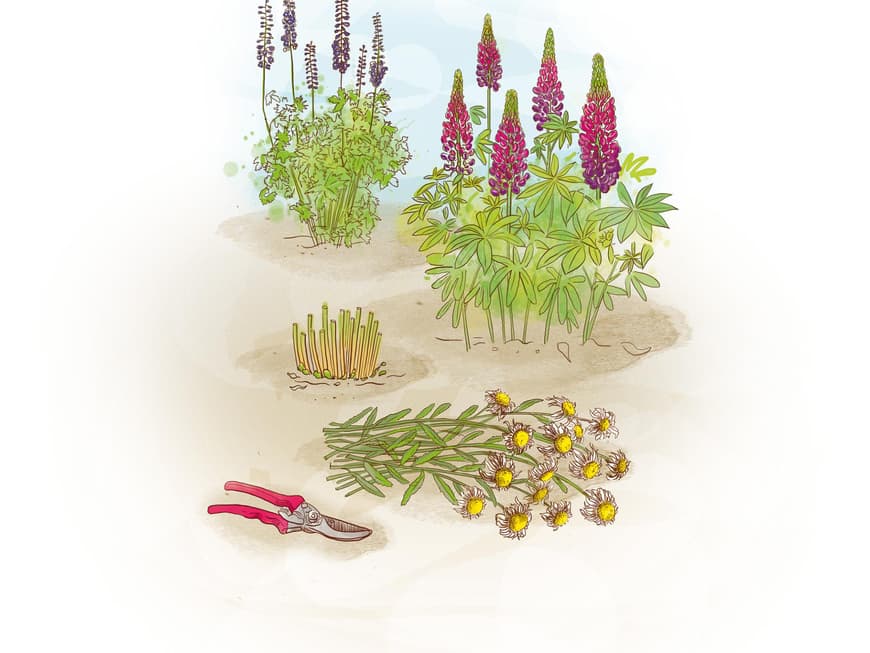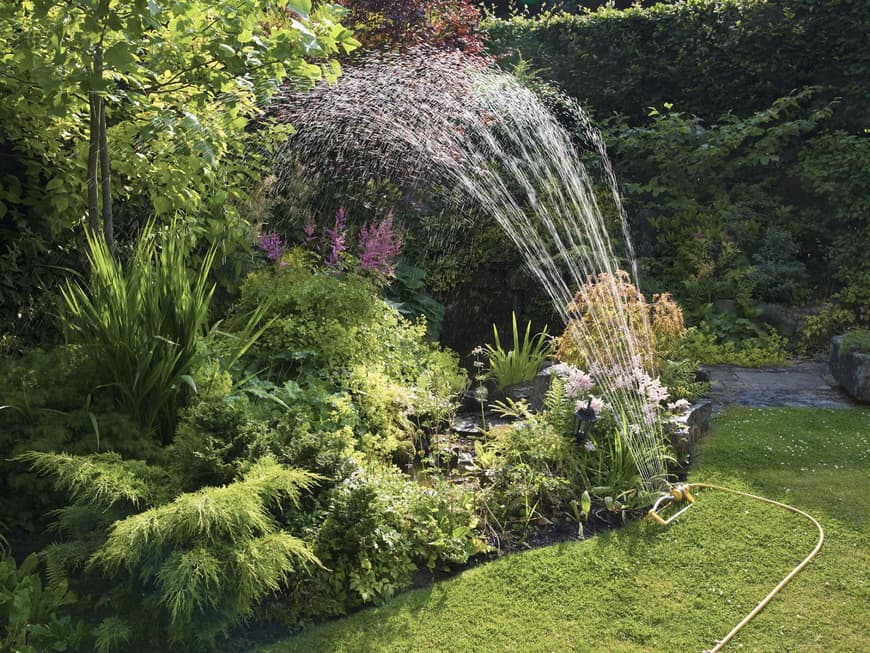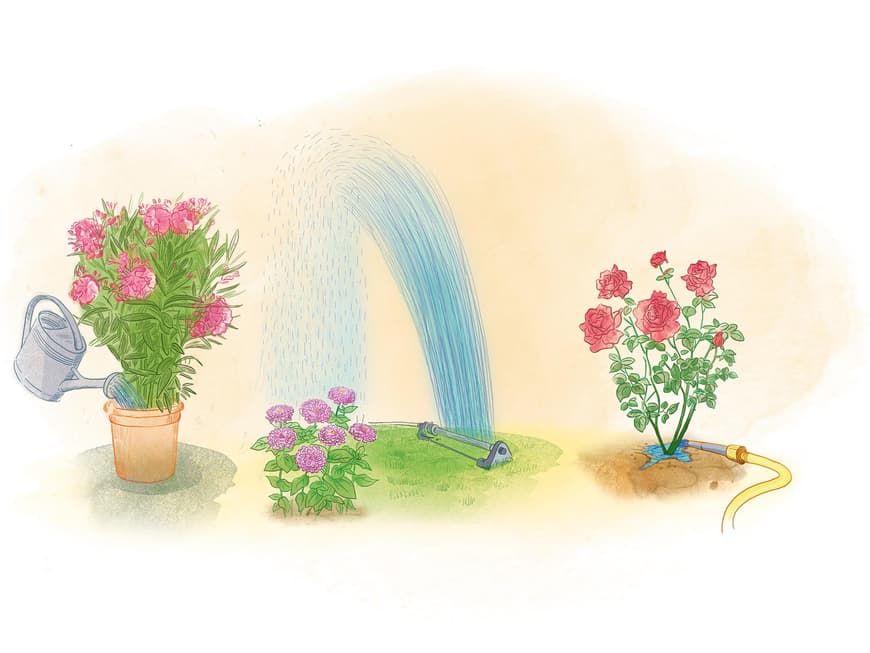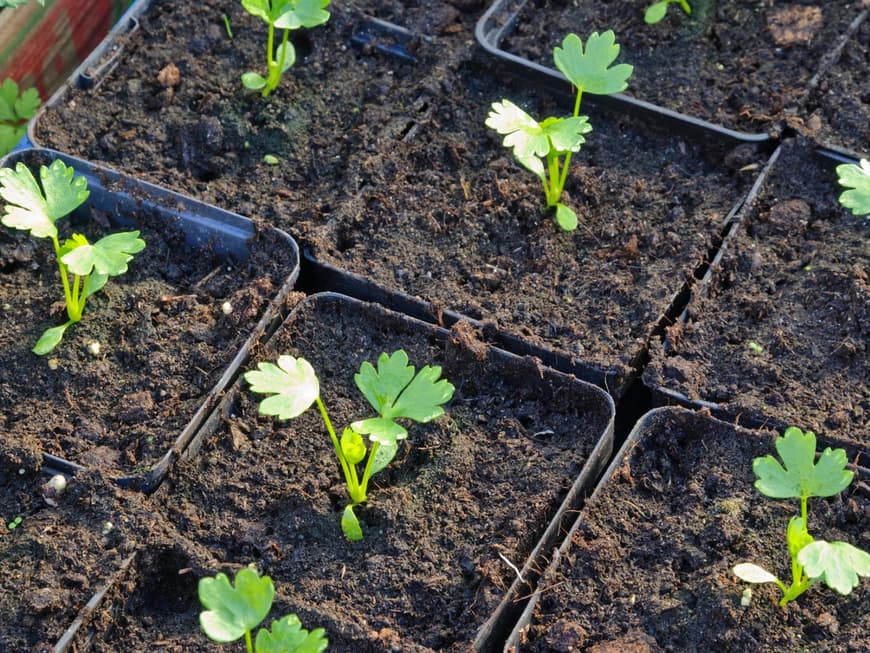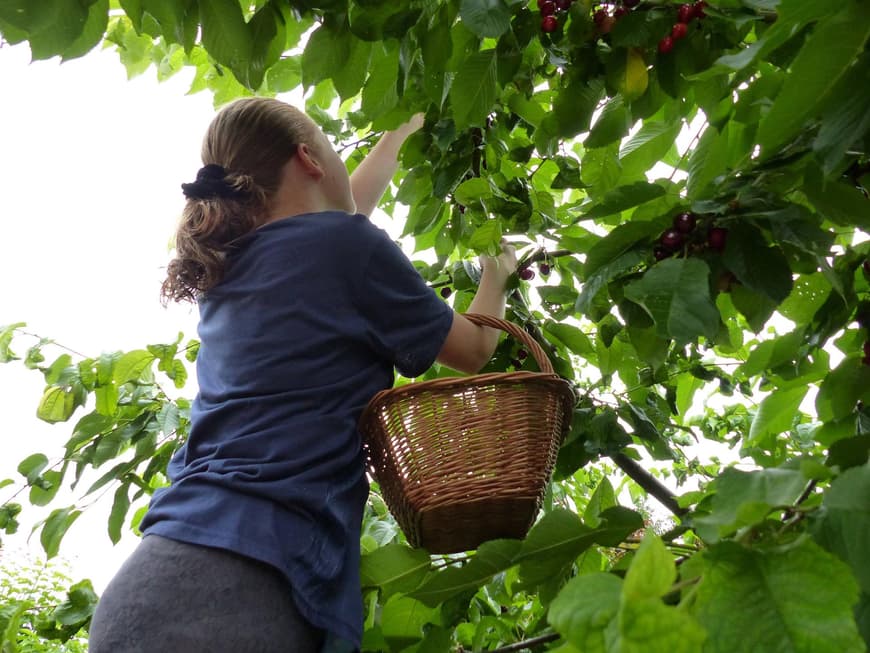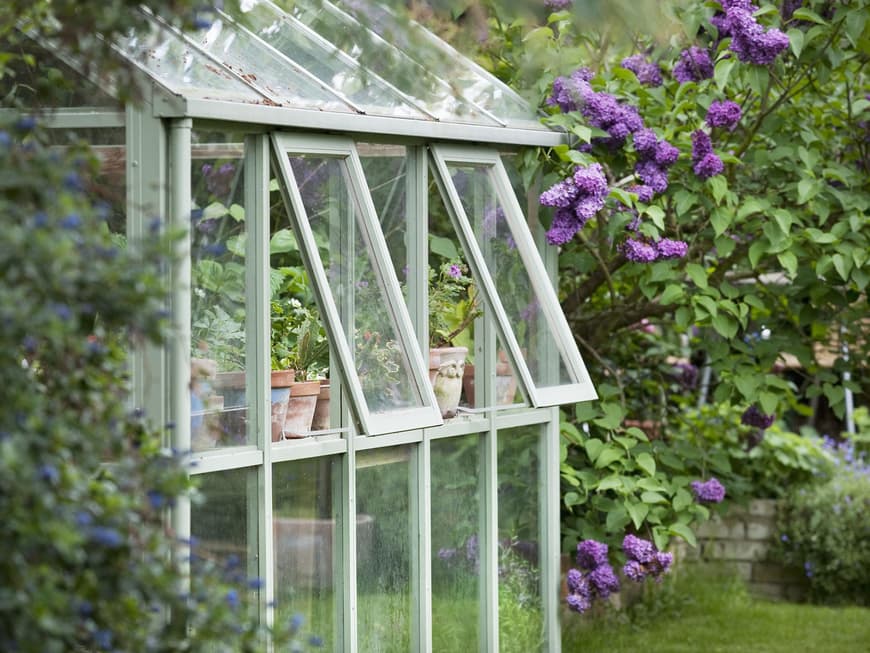Gardening tips for June
Carry out shaping pruning
Pole perennials that have already faded are given a light pruning - if possible, only prune this year's growth. Shaped shrubs and strict hedges are pruned a second time after St. John's Day (June 24).
Routine work with vegetables
In the vegetable patch, potatoes are now mounded up when they are about 15 centimetres high. Zucchinis and pumpkins are given an extra dose of fertilizer and water. Winter vegetables such as late cabbage varieties, leeks or pak choi are planted in June so that they develop optimally.
Warmth lures you outside
On a cloudy day, all overwintered plants can generally be planted outside after the Ice Saints from May 15 - but there is no harm in waiting until June. If the weather is stable and mild, sensitive plants such as begonias and heliotropes as well as houseplants can be planted or set up outdoors.
Bringing the scent close
Evening and night-scented plants such as ornamental tobacco, star balsam or royal lilies provide wonderful fragrance experiences, especially near seating areas.
Tricking birds
Currants are one of the first fruits that can tempt birds to help themselves to them. Fortunately, the bushes grow compactly enough to be wrapped in a protective net. It is essential that the fine-meshed netting is not only tight over the crown of the plant, but also completely covers the base branches of the shrubs. After all, no cheeky peepers should be able to sneak up on the tempting berries from below and ultimately not find their way out of the net trap. In any case, the nets should be checked daily for unwilling captives.
Gardening tips for July
Flowering potatoes and fragrant summer lime trees are a sign of midsummer. In the hottest time of the garden, the most important utensils are now watering cans, hoses and baskets for harvesting summer vegetables.
How to get and keep water in the soil
During the summer heat, all strategies that help retain moisture in the soil are in demand. Mulching, hoeing and weeding are helpful, as weed roots take up a lot of the precious moisture. Problems arise when there is a lack of rainfall. In very sandy soils, for example, seasonal flowers and vegetables dry out after just two days, while lawns last about twice as long. If you water, then water thoroughly! The root zones of the plants, at least 20 to 30 centimetres, should be completely saturated with moisture. Watering with a sprinkler can easily take several hours. If you water in the evening, you are unfortunately encouraging snail infestation and will have to stalk them more often. You can also water your beds in the morning. If possible, hoe the soil once immediately after each watering; this keeps the water in the soil. Plants in tubs and containers are particularly susceptible to drought. Check them daily and feed them if necessary. Periods of overcast weather and wind are also dangerous if there is little or no rain.
Don't forget the compost
Compost must also not dry out during the heat. If it is in a shady spot, this risk is low, but it cannot be ruled out. One thorough watering is usually sufficient.
Good care - lots of flowers
All plants that constantly produce new flowers and fruit also need nutrients in midsummer. Many ornamental plants only bloom continuously until the fall if you cut out faded flowers. Whether summer lilacs, roses and marigolds in the flower bed or pelargonium, rampion and fuchsia in a tub, they should not set seed. Once flowering in summer or late summer, bulbous plants such as star gladioli, gladioli, hook lilies or decorative lilies are extremely grateful for a portion of fertilizer.
Feeding soft fruit
If you have strawberry beds, separate the runners from the mother plants now so that they do not exhaust themselves. This will give you plenty of young plants for new areas. Shallow-rooted raspberry bushes that may be growing nearby will benefit greatly from a thick layer of compost mulch in summer.
Special planting times for garden jewels
In July, bearded irises are planted or divided and transplanted. The new rhizomes are only planted horizontally in a very flat, sunny spot in well-drained soil. From the end of the month, you can also plant the coveted Madonna lilies (Lilium candidum). This is the only type of lily whose bulbs are planted so flat that their tips are directly flush with the soil surface. Only when planted early is there enough time for this lily to develop a rosette of leaves that will enable it to survive the winter. Unfortunately, there are hardly any virus-free bulbs on the market at the moment, but with a bit of luck you can ask a lily friend for planting material.
Sowing parsley now
Parsley is considered tricky when it comes to sowing. However, this only applies to spring. You can expect good results now when temperatures are higher.
Harvest correctly
The first major harvests are on the horizon. Broad beans, early potatoes and early green beans are now ripe. Cherry season is also in full swing. It is best to harvest fruit and vegetables in the morning on dry days. If fully ripe cherries are hanging on the tree and thunderstorms are in the forecast, a hasty harvest is advisable.
Thin out shrubs
Ornamental shrubs that have flowered until June can be thinned out now. If their branches are too dense, cut out the older or weaker of the two right at the base.
Outwitting water lily beetles
If you have water lilies in your garden pond with many small holes in their leaves, the water lily beetle is probably at work. Lower all the leaves with a net weighted down with stones for two days and the spook will be over. This will not harm the plants at all.
Let them breathe
Anyone who cultivates plants in a greenhouse knows that ventilation is of central importance in summer - otherwise the temperatures rise far too much. The same applies to conservatories, of course, and plants on windowsills in the home also thrive much better if they are shaded and ventilated on the south side.
Arrange the flower buffet
After the hard work of tilling the soil and harvesting, the garden can be enjoyed to the full, for example while the sprinklers are running. Perhaps with a pretty summer salad enhanced with edible flowers? Nasturtiums, daylilies, dahlias, Indian nettles and many more provide a constant supply.
Diligent pruning promotes flowering
Some plants produce fruit very quickly after flowering. These in turn consume the substance of the plant. To ensure continuous flowering, cut as many cut flowers as possible. Vetches are the best example of this. All they need to keep flowering until autumn is a sufficient supply of water and fertilizer. The flower stems are cut off directly at the base of the tendril. A similar procedure is used for dahlias, zinnias or snapdragons; here you cut to the next lower branch.
Oxygen supply in the pond
The greater the heat, the warmer the water becomes. Oxygen can become scarce and its lack makes life difficult for the pond inhabitants. Small ponds in particular, but also heavily sunlit bodies of water, are affected by this. At the latest when you observe fish gasping for air on the surface of the water, there is a need for action. The easiest way is to install a fountain. The exact design of the water feature is a matter of taste, but it should not bubble higher than its distance from the water's edge. The fine water droplets that are pressed upwards take plenty of oxygen with them as they pass through the air, which is added to the pond water. Water that has evaporated in this way must be refilled into the pond. As a pleasant side effect, the air in the pond is noticeably cooled.
Caution with cicadas
Rhododendron cicadas promote infestation by dark sooty molds. These cause buds and shoot tips to die. As soon as the animals appear or are identified by yellow glue traps, treatment is necessary. Preparations made from neem oil, which are applied several times, are harmless but effective.
Cleverly mastering zucchini floods
Zucchini plants produce an impressive amount of fruit over the course of the summer. These taste best when they are harvested young. Large, heavy fruits only have a dull flavor. But even lots of small zucchinis can make a menu boring in the long run. The yellow flowers, which are not only beautiful but also edible and have a delicate nutty aroma, provide variety. They are harvested in the morning. The inner flower parts are then removed and the perianth is rinsed off. The larger female flowers are good for stuffing; smaller male flowers are better for frying.
Propagation by cuttings
Take shoot tips with five to seven pairs of leaves or leaves from fuchsias, pelargoniums or oleanders, for example, and leave the top two or three. All flowers and buds are removed. They are planted up to the lowest remaining leaf in potting compost; rooting aid is provided by a suitable powder or gel. A transparent cover, such as a freezer bag, is placed over them to provide sufficient moist air. Ventilate daily and the roots will appear after a few weeks.

